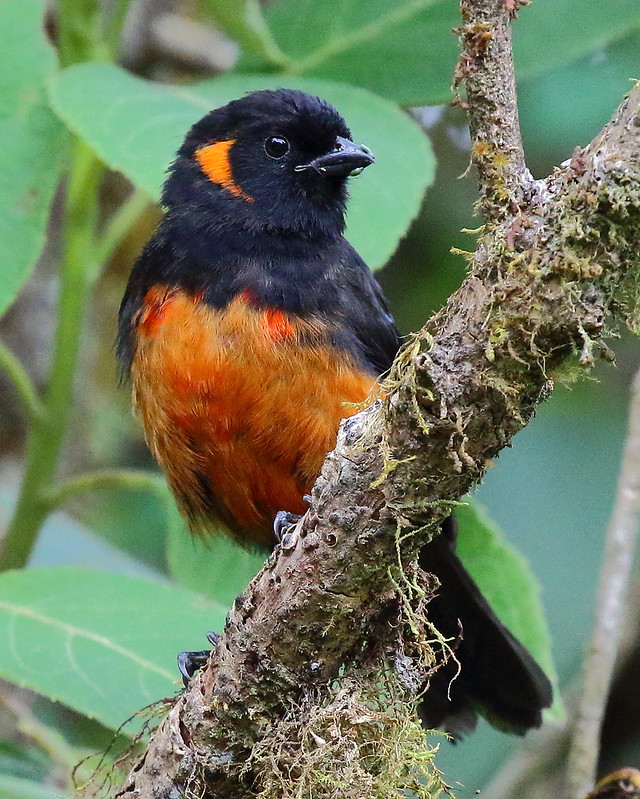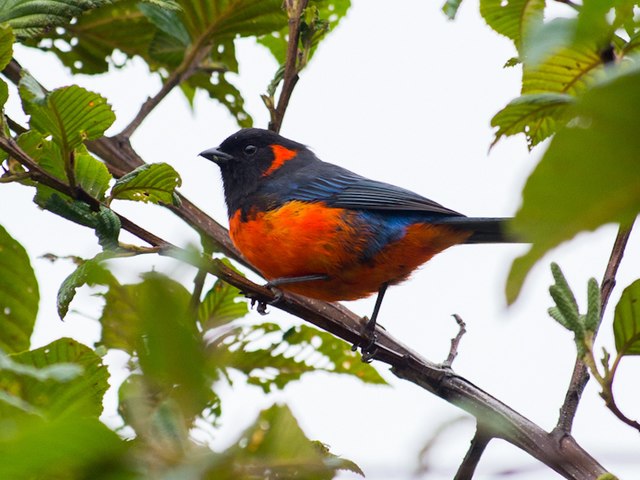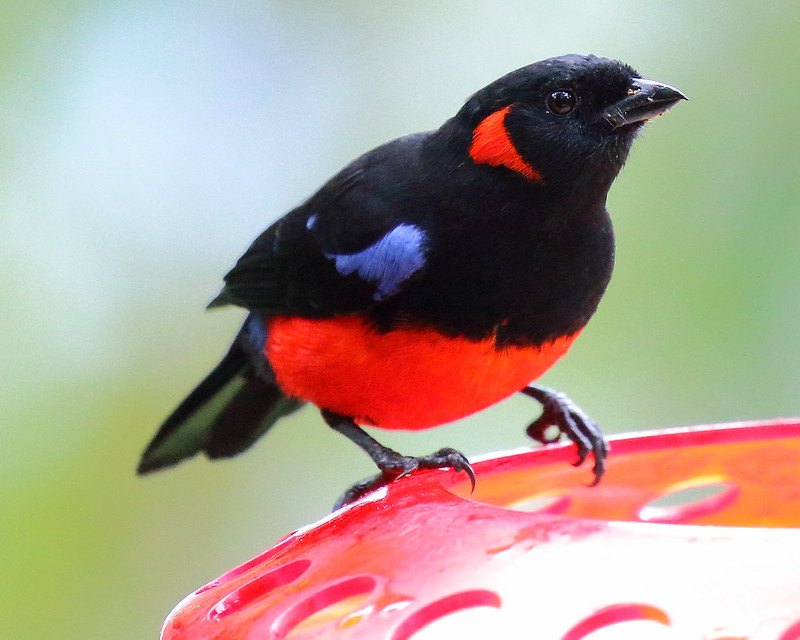His suit of black only enhances his beautifully bright scarlet belly and pastel blue shoulder patches to perfection.
Meet the Scarlet-bellied mountain tanager
Photo (cropped) Courtesy of Francesco Veronesi / CC BY-SA 2.0
The scarlet-bellied mountain tanager (Anisognathus igniventris) is a small bird, around 18 centimeters long, wearing mostly black plumage with a bright orange to red belly. There are also red ear patches covering each ear with a breast that is also red. The rump is bright blue, as are both shoulder patches.


Photo Courtesy of ryanacandee / CC BY 2.0
Males and females look very similar.
Juvenile birds tend to be a dull orange as opposed to bright orange or red.


Photo Courtesy of Joao Quental / CC BY 2.0
These birds are found in Bolivia, Colombia, Ecuador, Peru, and Venezuela.


Photo (cropped) Courtesy of Bettina Arrigoni / CC BY 2.0
These birds prefer habitats that contain montane forests, woodland, and shrub areas up to 2400 to 3500 meters.

 Photo Courtesy of Félix Uribe / CC BY-SA 2.0
Photo Courtesy of Félix Uribe / CC BY-SA 2.0
Scarlet-bellied mountain tanager flits from branch to branch looking for berries and small fruits. It also has been known to hunt for insects, especially those that can be found hiding in bromeliads.


Photo Courtesy of Félix Uribe / CC BY-SA 2.0
During the breeding season, the female lays up to two eggs while the male will feeds her as she incubates. However, both parents will feed the young after they hatch until they are ready to leave the nest at around two to three weeks when they will often be found in open spaces, pastures, and scattered trees.


Photo Courtesy of ryanacandee / CC BY 2.0
Although this species is not currently considered to be in danger by the IUCN, three members of the family have been declared under threat. These are the green hooded Tanager, golden loin mountain tanager, and the golden throated tanager.


Photo Courtesy of ryanacandee / CC BY 2.0
You can watch this bird right here in the video below:




